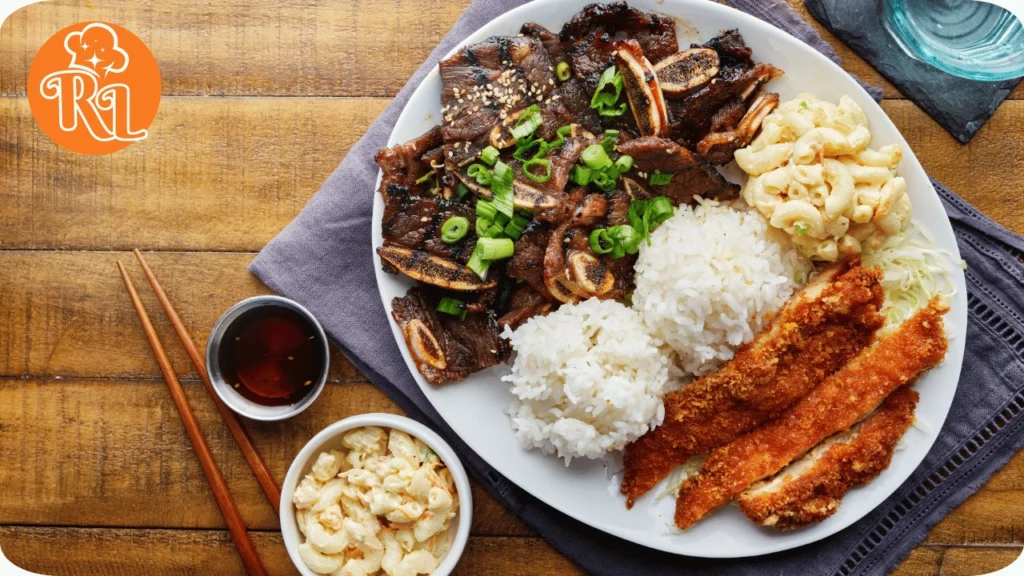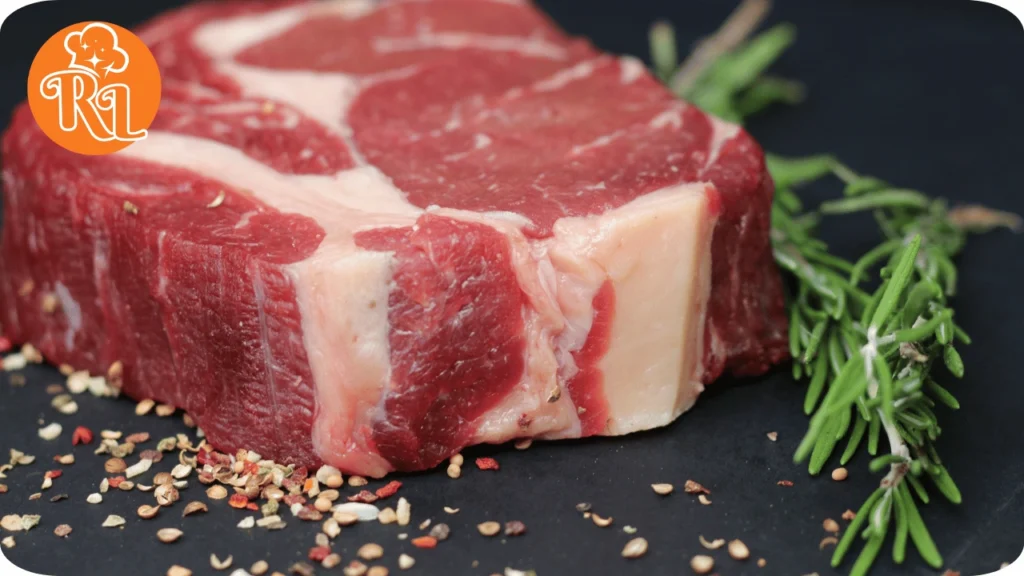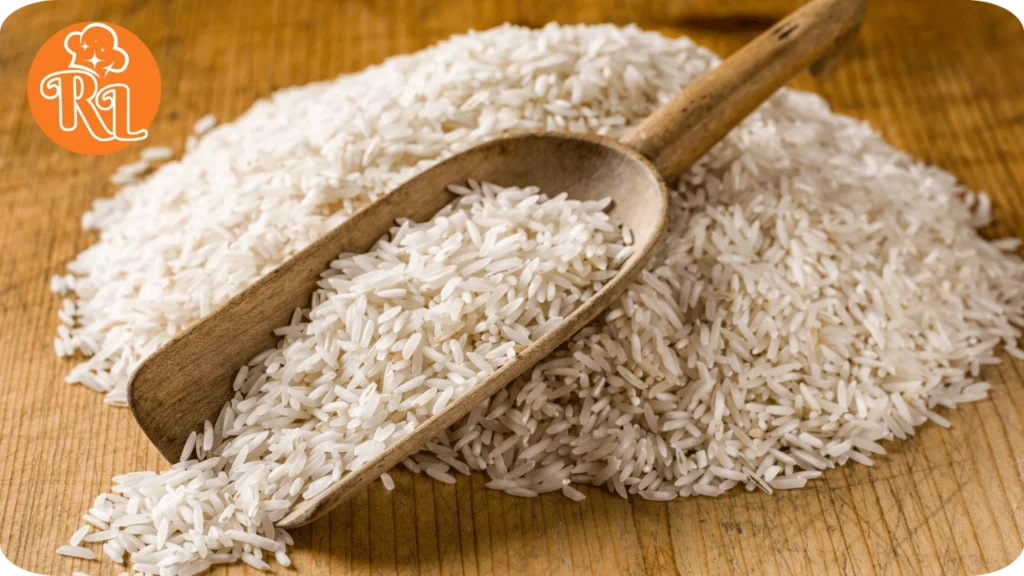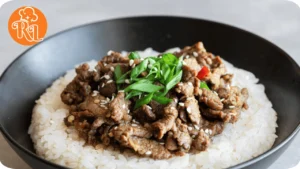Korean cuisine has taken the world by storm with its bold flavors, rich cultural heritage, and a perfect balance of savory, sweet, and spicy. Among the many dishes that have gained popularity globally, Korean-inspired fried rice, particularly Korean-Inspired Beef Fried Rice, stands out as a favorite due to its versatility and comforting qualities. This dish masterfully combines the principles of Korean cooking with the universally loved concept of fried rice, creating a perfect fusion of flavors that can be enjoyed by food lovers from all walks of life.
In this article, we’ll dive deep into the world of Korean-Inspired Beef Fried Rice. We will explore its origins, break down its ingredients, walk through the cooking techniques, offer variations, and discuss why this dish is perfect for any meal. Whether you are a seasoned cook or someone just starting in the kitchen, this comprehensive guide will give you all the information you need to make this delicious dish at home.
The Origins of Korean-Inspired Beef Fried Rice
Fried rice has a long history, originating in China and spreading across various Asian cuisines, each adding its unique spin on the dish. In Korea, rice is a staple of almost every meal, and the practice of frying leftover rice with other ingredients has become common, particularly in modern Korean households.

Korean Influence on Fried Rice
Korean cuisine is renowned for its balance of flavors: salty, spicy, sweet, and umami, often combining ingredients such as fermented pastes, soy sauce, garlic, sesame oil, and gochujang (Korean chili paste). These staples, when integrated into fried rice, give it a distinct, Korean-inspired flavor profile.
In Korea, “bokkeumbap” (볶음밥) refers to fried rice, which traditionally includes leftover rice, vegetables, and sometimes kimchi, along with protein sources like eggs or meat. By integrating beef into fried rice, we’re infusing the dish with a more substantial protein element, elevating it from a side dish to a complete and satisfying meal.
Korean-Inspired Beef Fried Rice takes this concept a step further by using high-quality beef, traditional seasonings, and aromatic vegetables, delivering a flavorful dish that is both deeply satisfying and comforting.
Key Ingredients in Korean-Inspired Beef Fried Rice
The magic of Korean-Inspired Beef Fried Rice comes from the careful selection of ingredients, which each bring a distinct flavor to the dish. Below is a breakdown of the key components.
1. Beef
The type of beef used in this dish can vary based on preference and availability. You can use ground beef for a quick and easy option, or go for thinly sliced beef strips, like bulgogi-style cuts, for a more authentic Korean touch. The beef is marinated in a flavorful mixture, often including soy sauce, garlic, sesame oil, and sugar, giving it a tender and slightly sweet taste.

- Recommended Beef Cuts:
- Ground beef for simplicity
- Thinly sliced ribeye or sirloin for a more tender, bulgogi-style version
2. Rice
Rice is the heart of any fried rice dish. For Korean-Inspired Beef Fried Rice, it’s ideal to use leftover rice that’s been refrigerated overnight. This is because cold rice has a firmer texture, which prevents it from becoming mushy during the frying process. Short-grain white rice is traditionally used in Korean cooking, but you can also use medium-grain or even brown rice for a healthier twist.

- Tip: If you don’t have leftover rice, cook fresh rice and spread it out on a baking sheet to cool quickly.
3. Vegetables
A variety of vegetables can be used to add texture, color, and nutrients to the dish. Common vegetables found in Korean-Inspired Beef Fried Rice include:

- Carrots: Adds sweetness and a crunchy texture.
- Onions: Provides a savory, aromatic base.
- Green onions (scallions): Often added at the end for a fresh, mild onion flavor.
- Kimchi: Fermented cabbage is a staple in Korean cuisine, and its tangy, spicy flavor pairs perfectly with beef fried rice.
- Peppers: Bell peppers or even spicy varieties for a hint of heat.
4. Gochujang (Korean Chili Paste)
Gochujang is a key flavoring agent in Korean-Inspired Beef Fried Rice. This fermented chili paste gives the dish a rich, spicy flavor with a hint of sweetness, characteristic of Korean dishes. It’s a versatile ingredient that not only adds depth but also color to the dish.
5. Soy Sauce and Sesame Oil
Soy sauce provides a savory, umami backbone to the dish, while sesame oil imparts a nutty fragrance that enhances the overall flavor. In Korean-Inspired Beef Fried Rice, these two ingredients work in harmony to bring out the best in the beef and vegetables.
6. Eggs
Adding a scrambled egg to fried rice is a traditional element in many Asian cuisines, including Korean. The egg adds richness and texture, helping to tie the ingredients together.
7. Seasoning and Garnish
The final touch to Korean-Inspired Beef Fried Rice includes various seasonings and garnishes like:
- Sesame seeds: For a subtle crunch and nutty flavor.
- Fresh cilantro or parsley: To add a fresh, herbal contrast.
- Pickled radish or kimchi: For acidity and crunch.
- Nori (seaweed strips): Adds umami and a touch of the sea.
Cooking Techniques for the Perfect Korean-Inspired Beef Fried Rice
Achieving the perfect Korean-Inspired Beef Fried Rice involves mastering a few essential cooking techniques. While fried rice may seem like a simple dish, the key to success lies in attention to detail and balance.
1. Preparation of the Ingredients
Before you begin cooking, ensure all ingredients are prepped and ready. This includes chopping the vegetables, marinating the beef, cooking the rice, and having your seasonings measured out. Fried rice is cooked quickly over high heat, so having everything prepared in advance will make the process smooth and efficient.
2. Marinating the Beef
For the best flavor, marinate the beef in a mixture of soy sauce, sesame oil, garlic, and sugar. Marinating allows the flavors to penetrate the meat, making it more flavorful and tender. For bulgogi-style beef, a longer marination (1-2 hours) is ideal, but ground beef can be marinated for as little as 15-30 minutes.
3. High Heat Cooking
A high heat cooking process is essential for achieving the perfect fried rice. A well-heated wok or large skillet is ideal for this dish. The high heat allows the rice and vegetables to cook quickly while maintaining their texture and color. Additionally, it ensures that the rice develops that signature slightly crispy texture.
4. Layering the Flavors
Start by cooking the beef first. Once browned and cooked through, remove it from the pan to avoid overcooking. Then, sauté the vegetables in the same pan, absorbing the beef’s flavors. Afterward, push the vegetables to the side of the pan and scramble the eggs in the middle. Finally, add the cold rice and beef back to the pan, combining everything with the gochujang, soy sauce, and sesame oil.
5. The Importance of Stirring and Tossing
As you combine all the ingredients, constantly stir and toss the rice to ensure even cooking and that all flavors are well distributed. This will also prevent the rice from sticking to the bottom of the pan.
Variations of Korean-Inspired Beef Fried Rice
One of the great things about Korean-Inspired Beef Fried Rice is its versatility. You can easily modify the dish to suit your taste preferences or dietary needs. Below are some popular variations.
1. Spicy Korean-Inspired Beef Fried Rice
For those who enjoy a bit of heat, this variation adds extra gochujang or chili flakes to amp up the spice. You can also top the dish with sliced fresh chilies for an additional kick.
2. Kimchi Beef Fried Rice
This version incorporates chopped kimchi directly into the fried rice, giving it a tangy, fermented flavor that pairs wonderfully with the beef. The kimchi also adds texture and a bright red color, making the dish even more visually appealing.
3. Vegetarian Korean-Inspired Fried Rice
For a vegetarian option, simply omit the beef and increase the variety of vegetables. You can also add tofu or plant-based meat alternatives to mimic the beef’s texture. The remaining flavors, such as gochujang, soy sauce, and sesame oil, ensure that this version is just as flavorful.
4. Korean Beef Fried Rice with Quinoa
For a healthier twist, replace the rice with quinoa. Quinoa has a slightly nutty flavor and is rich in protein, making it a nutritious alternative while still providing a similar texture to rice.
5. Fusion Beef Fried Rice
For a unique fusion approach, incorporate non-traditional ingredients like pineapple for a sweet and tangy contrast, or experiment with different herbs and spices to create your version of Korean-Inspired Beef Fried Rice.
Serving Suggestions for Korean-Inspired Beef Fried Rice
Korean-Inspired Beef Fried Rice is a versatile dish that can be served in a variety of settings. Here are some ideas for how to present and enjoy this delicious dish.
1. As a Main Course
Serve Korean-Inspired Beef Fried Rice as the centerpiece of your meal. Pair it with simple side dishes like a cucumber salad, pickled radishes, or a bowl of miso soup to create a well-rounded, satisfying meal.
2. As a Side Dish
This dish also works well as a side to complement other Korean dishes, such as Korean BBQ (bulgogi), grilled fish, or a spicy tofu stew. Its robust flavors make it a great pairing for milder dishes, balancing the meal.
3. In a Korean BBQ Feast
If you’re hosting a Korean BBQ feast, serve Korean-Inspired Beef Fried Rice alongside other staples like grilled meats, lettuce wraps, and various banchan (side dishes) like kimchi, pickled vegetables, and steamed eggs. The fried rice adds a filling, flavorful component to a spread of lighter grilled items.
Why Korean-Inspired Beef Fried Rice is a Must-Try Dish
Korean-Inspired Beef Fried Rice brings together the best of both worlds: the hearty, comforting nature of fried rice and the bold, complex flavors of Korean cuisine. The dish’s versatility allows it to fit into almost any meal, whether as a quick weeknight dinner, a part of a larger Korean BBQ spread, or a creative fusion option.
1. Balance of Flavors and Textures
The combination of marinated beef, crispy fried rice, spicy gochujang, and fresh vegetables creates a perfect balance of flavors and textures. The dish is savory and slightly sweet, with a kick of heat and a delightful crunch from the vegetables and sesame seeds.
2. Quick and Easy
Despite its impressive flavors, Korean-Inspired Beef Fried Rice is surprisingly quick and easy to prepare. With the right preparation, you can have a delicious, restaurant-quality meal on the table in less than 30 minutes. It’s also a great way to use up leftover rice and vegetables, making it a convenient option for busy nights.
3. Customizable
One of the best aspects of Korean-Inspired Beef Fried Rice is its adaptability. Whether you’re catering to dietary restrictions, experimenting with new ingredients, or simply using what you have on hand, this dish is highly customizable. It can easily be modified to suit different tastes or dietary needs.
Here’s a sample nutritional value table for a typical serving of Korean-Inspired Beef Fried Rice (about 1 cup or 200-250 grams). The values can vary based on specific ingredients and portion sizes, but this gives a general idea:
| Nutrient | Amount per Serving |
|---|---|
| Calories | 450-550 kcal |
| Protein | 20-25 g |
| Total Fat | 15-20 g |
| Saturated Fat | 4-6 g |
| Carbohydrates | 60-70 g |
| Dietary Fiber | 2-4 g |
| Sugars | 2-4 g |
| Sodium | 600-800 mg |
| Vitamin A | 5-10% DV |
| Vitamin C | 8-12% DV |
| Calcium | 2-5% DV |
| Iron | 10-15% DV |
Key:
- DV: Daily Value based on a 2,000-calorie diet.
This table is a general estimate and can change depending on ingredient specifics, cooking methods, and any additional toppings or side dishes included. For precise nutritional information, it’s best to analyze the specific ingredients used in your recipe.
Conclusion
In conclusion, Korean-Inspired Beef Fried Rice is a dish that combines the comforting nature of fried rice with the bold and exciting flavors of Korean cuisine. Its simplicity, versatility, and rich flavors make it a must-try for anyone looking to expand their culinary repertoire. Whether you’re a fan of Korean food or just love a good fried rice dish, this recipe is sure to become a favorite in your kitchen.
By mastering the key ingredients, cooking techniques, and variations outlined in this guide, you can create a dish that is not only delicious but also a true reflection of Korean culinary traditions. So the next time you’re in the mood for a quick and satisfying meal, give Korean-Inspired Beef Fried Rice a try—you won’t be disappointed!

